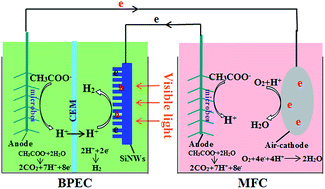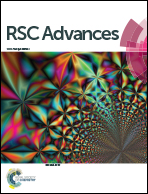A solar assisted microbial electrolysis cell for hydrogen production driven by a microbial fuel cell
Abstract
Here, we report a new microbial electrolysis cell (MEC) system for hydrogen generation that was composed of a microbial fuel cell (MFC) and a bio-photoelectrochemical cell (BPEC). The BPEC consisted of a photocathode and a microbially-catalyzed anode. In the new MEC system, hydrogen was produced by the BPEC photocathode when it was illuminated with visible light, with the voltage for electrolysis supplied by the MFC. The electrons produced from the MFC anode were transferred to the BPEC photocathode through an external circuit and then photogenerated holes captured some of the electrons emitted by the MFC anode under visible light. This prevented the recombination of the photogenerated hole and electron pairs, leaving more photogenerated electrons available for hydrogen evolution reactions. This also allowed the remaining electrons from the MFC anode to participate in hydrogen evolution reactions. Under visible light, hydrogen was continuously produced from the new MEC system, with a maximum current density of 0.68 A m−2 and an average hydrogen-production rate of 1.35 ± 0.15 mL h−1.


 Please wait while we load your content...
Please wait while we load your content...